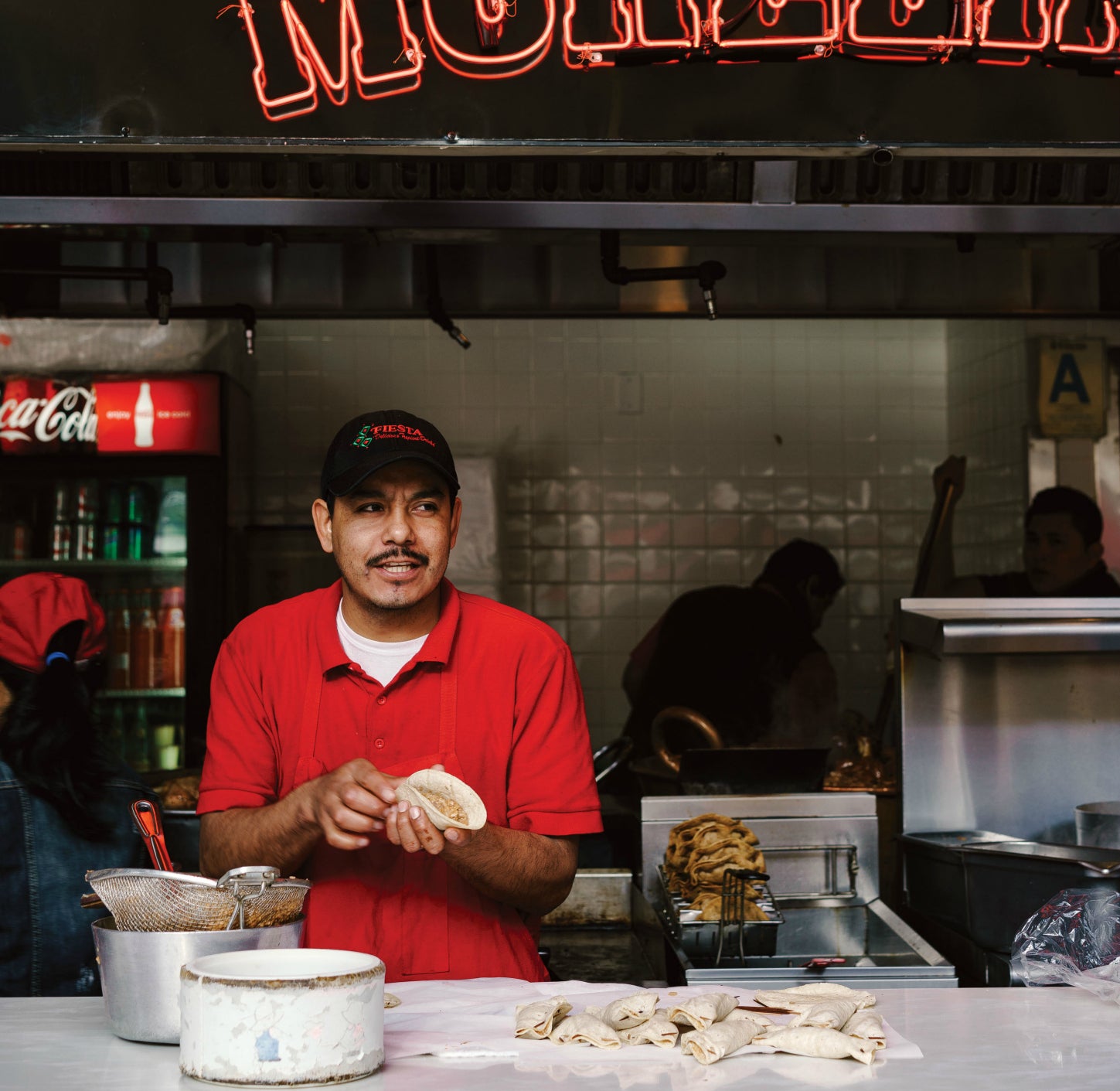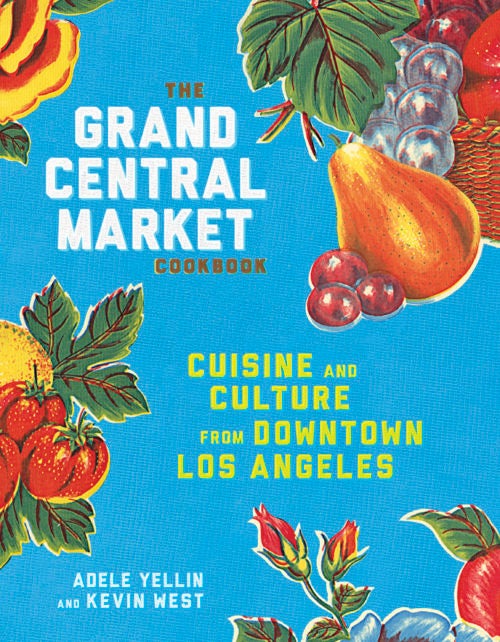One hundred years old, the downtown market represents the city’s ever-evolving food scene. And now there’s a book documenting it all.
A great many moons before the Korean taco craze, the tsukemen ramen craze, the avocado toast craze, the ricotta toast craze, the almond macadamia milk cappuccino craze, and the Los Angeles–is-the-epicenter-of-food-in-America craze captured the attention of food writers, magazine editors, and social media #influencers around the globe, the Grand Central Market—the subject of a new cookbook published by Clarkson Potter—swung open its doors near the corner of 3rd Street and Broadway in downtown L.A. This happened in 1917, precisely, and the market has been open continuously ever since. Happy 100 years!
It’s a remarkable run for any business—here a collection of 38 food stalls representing Southern California’s staggeringly diverse population. There’s egg foo yeung and bento boxes being sold alongside Roman-styled pastas, labneh-dotted falafels, vegan ramen, and slow-smoked barbecue from a guy called the Horse Thief. GQ once called Grand Central Market the “most socially and economically integrated public space in America.” I’d challenge that claim—walk outside the Barclays Center after a Brooklyn Nets buzzer beater and you will see people—but it’s super fair to acknowledge that the market is diverse and inclusive.
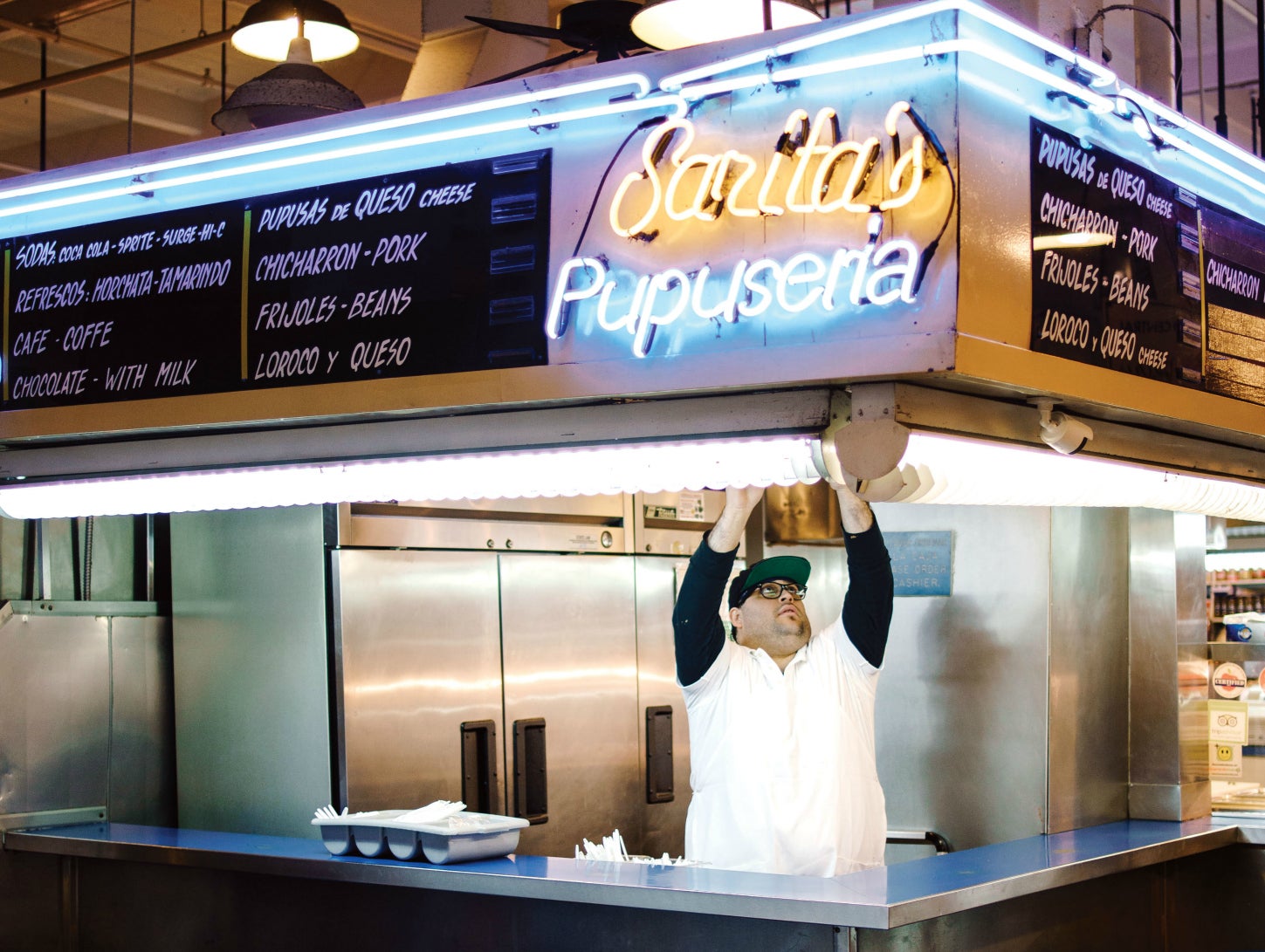
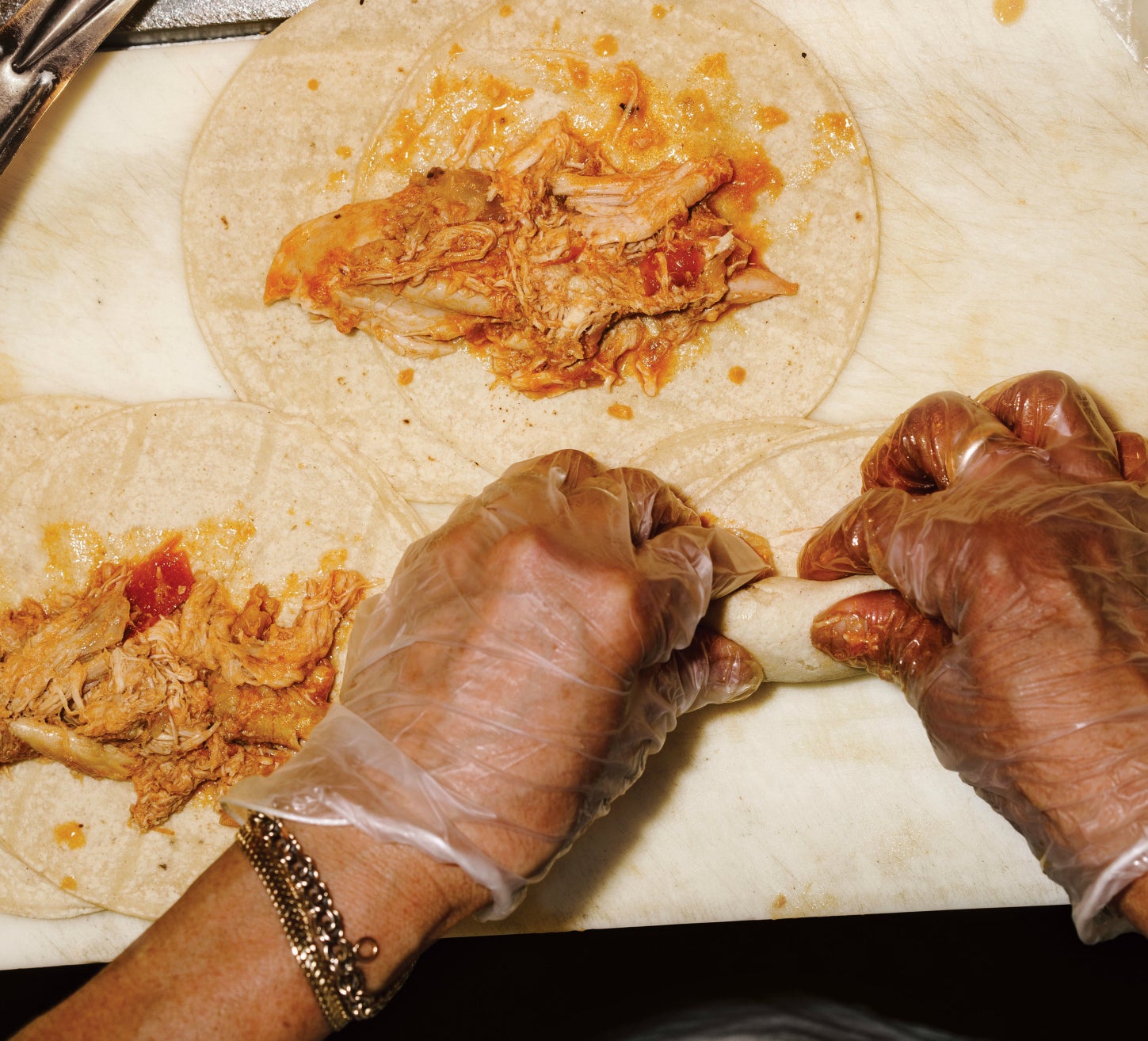
And hardly a fossilized relic. A tourist trap? For sure! Avoid Saturday and Sunday if crowds switch on the agita. But having personally spent many mornings and afternoons walking, and snacking, up and down the rows, I can say that along with the weekly Smorgasburg L.A. Sunday gathering, Grand Central represents the best way to mainline the city’s wonderful food.
Andy Wang writes about the Los Angeles restaurant scene for Food & Wine, the Observer, and occasionally TASTE. “The market is a good representation of what’s delicious and what matters in L.A.,” he says, adding that it’s also a great way to see where L.A. food is headed. “Think about how Eggslut redefined casual-cool in L.A., how Madcapra was the precursor to Kismet, how Sticky Rice kind of gave birth to cool places all over the city, like Side Chick.”
“I have mixed feelings about the redevelopment (as I think a lot of folks do),” says Besha Rodell, who until recently was the restaurant critic at LA Weekly. “On the one hand it’s nurtured a ton of great food and businesses, and it’s undoubtedly revitalized the area. On the other hand, it’s no longer really a functioning market (which it used to be). It’s a food hall, and the massive gentrification of the change is undeniable. In that way it really does represent LA’s food scene! But also because you can get everything from a $3 pile of carnitas to oysters and champagne in that sense as well, it’s very LA.”
And there’s Eggslut. Oh, Eggslut. Or shall we call it the Eggslut Effect. Opened in October 2013 at the mouth of the market’s Broadway entrance, Eggslut is the genius of chef Alvin Cailan, a veteran of fine dining and high-concept shops in Europe (Muguaritz, Noma) and Portland (Castagna, Olympia Provisions). In the end eggs—coddled, scrambled, BEC’d—became this dude’s specialty, and after a successful run as the Eggslut food truck, he opened a stall in the market with that cheeky name, and lines have been forming ever since, without a doubt drawing a younger, cooler, social-savvy audience to the market. “I’m a slut for eggs. So, Eggslut,” Cailan notes in the book, next to his Ur-chef-y recipe for his famous coddled eggs with potato puree. Highlights include: 4 eggs, 1 pound of potatoes, 10½ tablespoons butter, serving four. Eggslut: not messing around. And the book is not messing around, either.

Every food vendor at Grand Central Market contributed to the cookbook, which was cowritten by Adele Yellin (the market’s feisty owner) and Kevin West (a longtime manager). It’s broken into seven thematic, kinetic chapters (which mirrors the fast-moving pace of the market): Breakfast; Tacos, Etc.; Carbs; Happy Hour; Meat and Fish; Veg; and Sweets. There’s a killer smoked salmon latke recipe from Wexler’s Deli. “From the get-go, we wanted people to bite into a bagel and lox and say, “Fuck, that’s the best bagel and lox,” says Micah Wexler of his excellent take on Jewish smoked fish. “We want them to say that every day.”
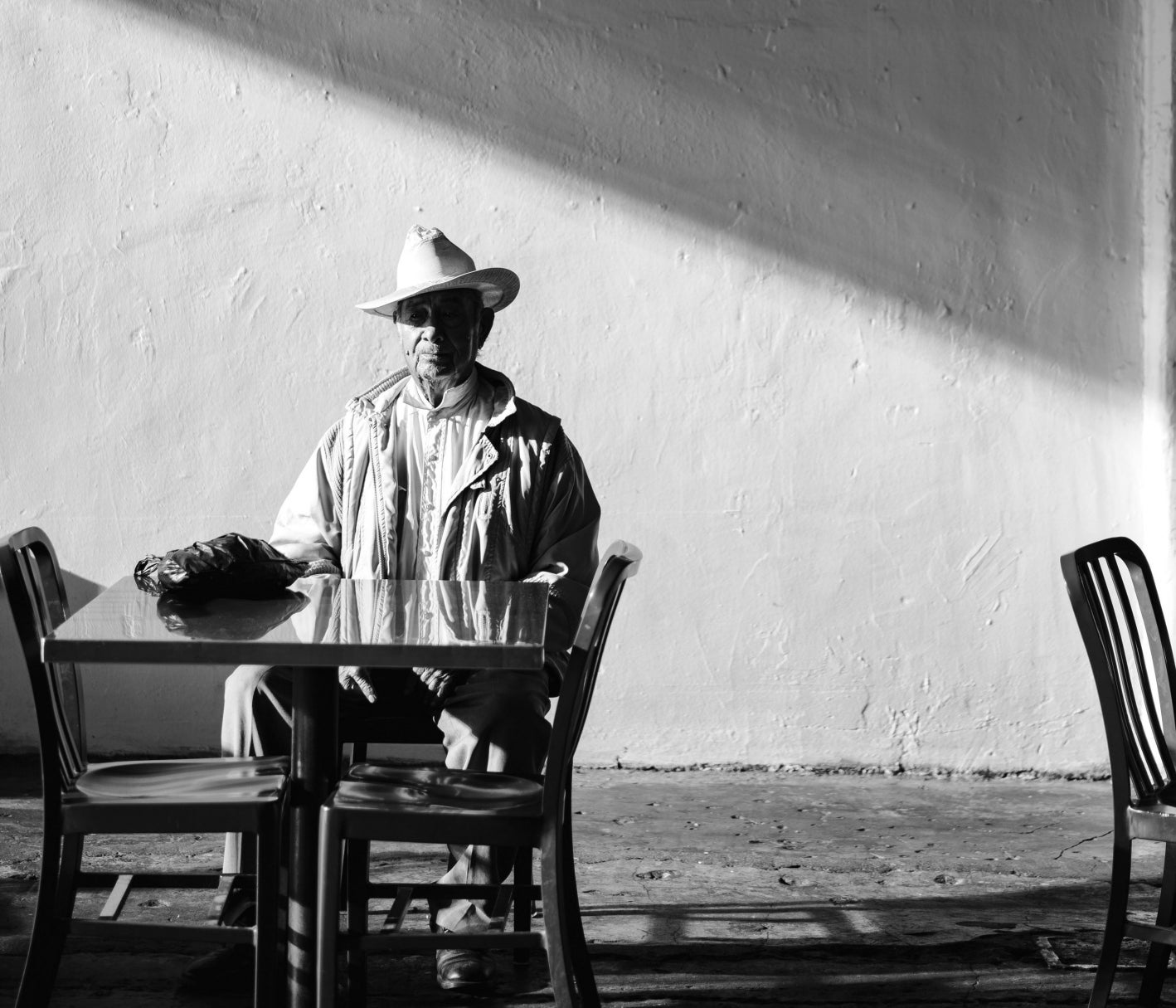
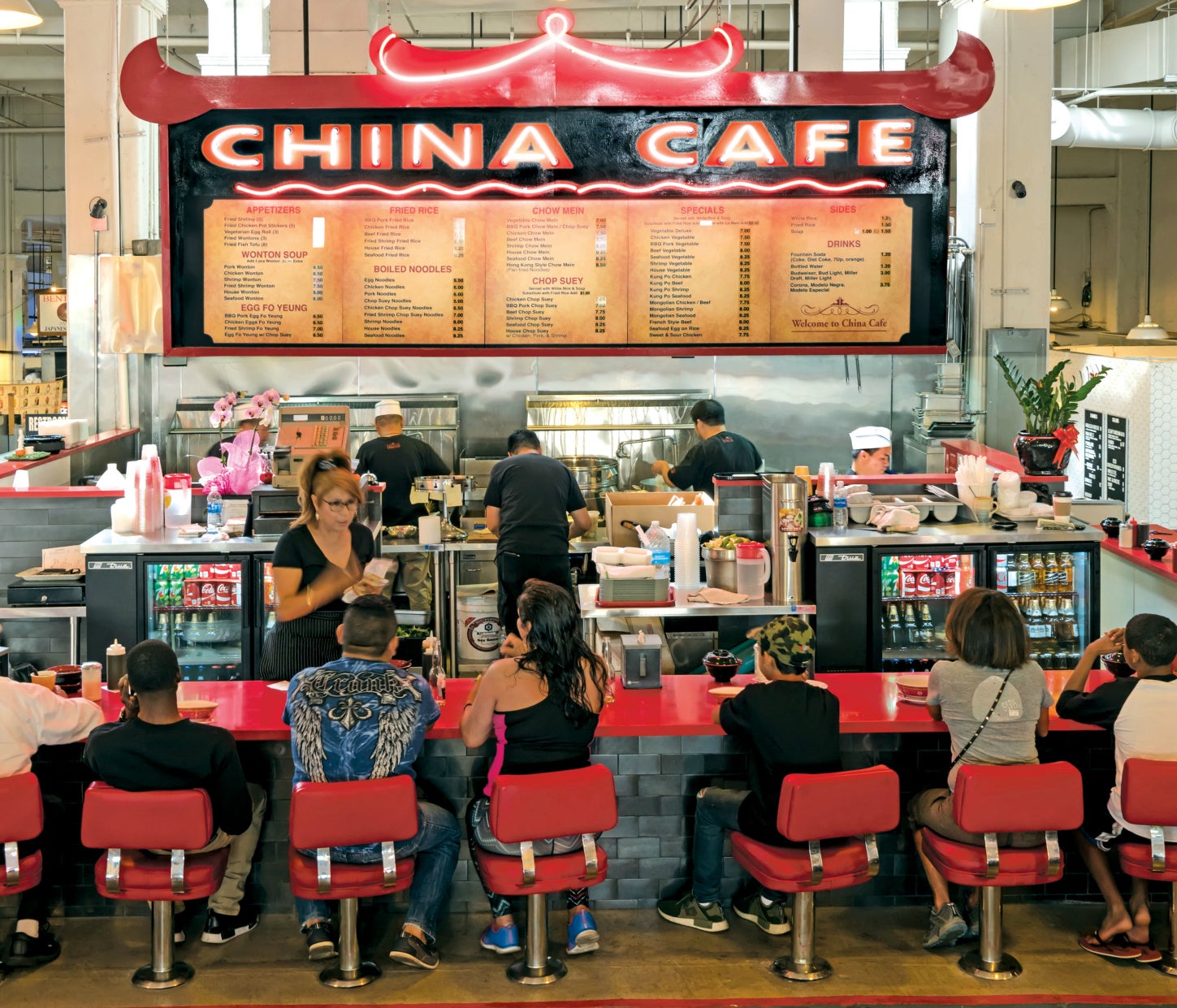
The legendary Sticky Rice stall (an early favorite of the Los Angeles Times food section staff) offers up a recipe for boat noodles, and there’s a recipe for carne guisada—Salvadoran stewed meat pupusa from Sarita’s Pupuseria. The vibe and energy of the market is captured honestly by photographer Johnny Autry, a master of the documentary style and balancing light. We love Johnny at TASTE.
I press journalist Andy Wang for his favorite stall. “It’s so diverse that I don’t have a go-to, honestly,” he says. I don’t let him off the hook. “The Sunday gravy at Knead is probably what I recommend most,” he offers, adding that it’s the closest thing to New York City Italian he’s found in L.A. And there’s a recipe for that, too.
Ingredients
- ¼ cup fine sea salt, plus more for garnish
- 1 pound russet potatoes, peeled and cut into ¾-inch dice
- 10½ tablespoons unsalted butter, softened
- Kosher salt
- 4 large eggs
- 2 tablespoons thinly sliced fresh chives
- 8 quarter-inch-thick slices baguette, cut on a diagonal, toasted
Eggslut’s menu is small but mighty, revolving mostly around breakfast sandwiches on brioche buns. But the signature dish just might be the soft coddled egg with potato puree, aka the Slut. It arrives in a Mason jar, and the pro move is to stir the egg and potatoes together. Scoop them out with a crunchy toasted baguette, which basically acts as an edible spork. The Slut became an instant Market classic, further testament to the incredible edible egg.
Note: This recipe requires 4 half-pint Mason jars with sealable lids.
- In a large stockpot, bring 7 quarts water to a rolling boil over high heat. Stir in the sea salt. Add the diced potatoes and cook until fork-tender, 15 to 20 minutes. Turn off the heat and remove the potatoes with a slotted spoon, reserving the water in the pot. Run the potatoes through a food mill or ricer until smooth. Stir in the butter. Add kosher salt to taste.
- Transfer the potato puree to a piping bag (or zip-top plastic bag with the corner snipped off) and divide it evenly among 4 half-pint Mason jars, filling each about one-third of the way. Crack an egg into each jar on top of the puree, and seal the lids.
- Return the water on the stove to a simmer over medium-high heat. Place the jars in the simmering water and cook for 15 minutes, or until the egg whites are set.
- Remove the jars from the water, and take off the lids. Garnish each with a sprinkle of chives and sea salt. Serve with the toasted baguette alongside for scooping.
Ingredients
- ¾ cups long-grain rice, rinsed and drained
- 1¼ cups blanched almonds
- 1 cinnamon stick, broken into several pieces
- ⅓ cup agave syrup, or more as needed
- 1 cup seltzer water
- Ground cinnamon, for garnish
Horchata is a chilled, sweetened, milky Mexican beverage made from rice and flavored with almonds and cinnamon. It is essentially a lighter and more economical version of almond milk. At GCM and across Los Angeles, horchata is a favorite drink in hot weather and alongside a plate of tacos—it helps douse the heat in both senses. The rice adds a starchy or chalky quality, and perhaps to compensate, most taquerias use a very heavy hand with the sugar. But the rice flavor is also part of horchata’s charm, and this version inspired by GCM vendors reduces the sweetness—a bit. Like sweet tea in the South, horchata’s sugary taste and rich mouthfeel make the drink what it is. Of course those who prefer unsweetened tea might disagree, and by the same token you can adjust the recipe below to suit your own preference.
Note: Making horchata without a blender or food processor requires too much work to even contemplate. The rice and almonds require an overnight soak.
- In a blender or food processor, combine the rice with 3 cups hot water. Pulse until the rice is broken to bits, about 30 seconds. Transfer to a large jar or bowl, and add the almonds and cinnamon stick. Cover and set aside at room temperature to soak overnight, at least 12 hours and up to 24 hours.
- Transfer the rice, almonds, cinnamon stick, and soaking water to a blender or food processor. Pulse until smooth, 2 to 3 minutes. Strain the puree through a damp jelly bag or a double thickness of cheesecloth that has been wetted and wrung out over a large bowl. Squeeze to extract as much liquid as possible. Discard the solids.
- Add 1 cup water to thin the mixture, and stir in the agave. Taste and adjust the sweetness as needed. Transfer to a large pitcher or jar and place it in the refrigerator to chill for 1 hour. To serve, stir in the seltzer. Serve in tall glasses over ice, garnishing each with a pinch of ground cinnamon.
Ingredients
- 2 tablespoons extra-virgin olive oil
- 1 fresh oregano sprig
- 3 fresh basil sprigs, tied in bundle
- ½ pound pork shoulder
- ½ pound beef chuck
- ½ pound beef shank, cut into 2-inch pieces
- Kosher salt and freshly ground black pepper
- ¼ teaspoon dried red chile flakes
- 3 garlic cloves, crushed
- 1 small yellow onion, diced
- ¾ cups dry red wine
- 2 28-ounce cans whole San Marzano tomatoes
- 3 pounds spaghetti, prepared according to package instructions, for serving
- 1 cup grated Parmesan cheese, for serving
“Gravy” is chef Bruce Kalman’s version of a classic Italian-style red sauce, and he modifies that with “Sunday” because it’s the kind of big dish—big flavors, big portions—that will satisfy everyone at a large family gathering. Bruce’s sauce combines various cuts of flavorful meat simmered for hours with San Marzano tomatoes, fresh herbs, and pungent aromatics. Even in carb-phobic Los Angeles, it’s a best-seller.
- Preheat the oven to 300°F.
- Heat the oil in a large Dutch oven over medium heat. When the oil shimmers, add the oregano and basil, and fry until crisp, about 1 minute per side. Transfer the herbs to a paper-towel-lined plate to drain, reserving the oil in the pot.
- Season the meats generously with salt and black pepper. Increase the heat under the Dutch oven to high. Working in batches, add the meat and cook until deeply browned, 6 to 8 minutes per side. Transfer the meat to a tray. Add the chile flakes, garlic, and onion to the pot, and season with salt and black pepper. Sauté until the onion is translucent, about 2 minutes. Add the wine and cook until reduced by half, 6 to 8 minutes, using a wooden spoon to scrape up the browned bits from the bottom of the pot.
- Return the reserved herbs and meat to the pot. Add the tomatoes and their juices. Increase the heat to high and bring the liquid to a boil. Cover the pot and transfer it to the oven to cook for 2 hours, or until the meat is tender. Remove the pot from the oven, uncover, and let cool at room temperature for about an hour.
- Remove the herbs and discard. Transfer the meat to a cutting board and chop finely, then return it to the sauce and stir to combine. Place 3 cups of sauce in the bottom of a very large serving bowl. Add the prepared spaghetti and toss to coat. Add more sauce, if needed. To serve family style, ladle more sauce over and top with grated Parmesan.
